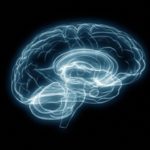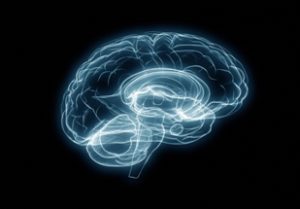How to choose applicable neuroscience research, connecting research to campus faculty, and one fascinating study on emotions
 As technology advances, new discoveries based on brain mapping are helping researchers understand how students learn. But how can educators spot the best neuroscience research, and how are researchers partnering with university staff to implement applicable research? Thanks to expert reports and diverse initiatives, higher education can reap the benefits of cutting-edge brain research.
As technology advances, new discoveries based on brain mapping are helping researchers understand how students learn. But how can educators spot the best neuroscience research, and how are researchers partnering with university staff to implement applicable research? Thanks to expert reports and diverse initiatives, higher education can reap the benefits of cutting-edge brain research.
Thanks to functional Magnetic Resonance Imaging (fMRI)–a type of non-invasive, low-radiation brain scan that measures neural activity in response to certain stimuli, and developed forms of neuroimaging–researchers are learning more about how we learn than many thought possible.
For example, perhaps the most shocking revelation in neuroscience is that the brain’s structure is more flexible than previously thought–a concept called neuroplasticity, meaning that the brain can still learn new concepts after various ages, and that every student can be taught many different ways. In a sense, the brain can be rewired.
Other studies have begun to measure reading aptitudes, the causes of and workings of attention-deficit disorder, and the way the brain processes mathematics.
Yet, with all this new research, it’s important to remember that a single study alone is not definitive–and the best research is tied to practice.
(Next page: How to spot the right research study)
How to spot a study you can use
Michael Atherton, a researcher in the Department of Educational Psychology at the University of Minnesota, believes educators should look only at specific types of studies when considering implementation strategies.
“Education is an applied field, like engineering,” said Atherton. “If there’s no connection to practice, then that research is best left to basic researchers in the cognitive neurosciences.”
In Atherton’s report titled “Education and fMRI: Promise and Cautions,” he describes detailed research techniques used in fMRI studies as the foundation for a methodological framework that can be used by educators to assess how applicable a study might be for classroom implementation.
This framework has three progressive stages:
1. Discovery. This type of study is a good foundational study, but it’s too broad at its current stage to have any direct implications for education. These studies typically focus on one area of the brain in relation to a specific cognitive function. For example, general intelligence seems to be localized in the lateral front cortex.
2. Functional analysis. This type of study moves from a generalization to a more focused study of brain activations. For example, if a discovery study researched which parts of the brain were stimulated while playing chess, the functional analysis study would now investigate how these parts of the brain function differently when someone is a novice or an expert. Another example might try to answer the question: “What is it that good readers do that poor readers do not?” Atherton says educators can derive good understanding from these studies, but they still should be cautious.
3. Pedagogical evaluation. If studies have shown which activations are associated with high levels of performance, the next phase asks: “Which pedagogical method results in students achieving higher levels of performance?” Studies that can answer this question can be used to guide instructional design, Atherton believes.
Emotions count
Mary Helen Immordino-Yang, assistant professor of education at the Rossier School of Education and assistant professor of psychology at the Brain and Creativity Institute at the University of Southern California, is a cognitive neuroscientist and educational psychologist who studies the brain bases of emotion, social interaction, and culture and their implications for student development.
She also helps educators understand current research studies and practices.
Thanks to her exploratory, yet detailed, work, she is helping spread the word about how the brain affects social interactions–and policy makers are listening.
In her study, “Neural correlates of admiration and compassion,” Immordino-Yang discovered, through fMRI scans, that when the emotion of admiration is evoked, the entire body is stimulated in response.
“Basically, when you feel admiration, the brain has a heightened self-awareness. This affects the body’s basic performances in a positive way, leading to better overall performance. It’s a startling discovery with many educational implications,” she said.
Immordino-Yang believes this study is important not because it reveals how the brain works, but because it exposes a basic nature that can’t be learned in the classroom alone. “Some things are just below the level of consciousness, so you can’t just ask [students] why they perform better at some times and some times they perform worse,” she said.
She also believes her study leads to a basic conclusion that could change traditional educational practices.
(Next page: Rational decisions; connecting professors with research)
“Students are taught that rational decision-making is devoid of all emotions. This is clearly not true,” she said. “If you try to dissociate from your emotions, the worse your decision-making will be. This could be a useful lesson for standardized tests and curriculum makers. Educators should try and help kids analyze their emotions during tests, not put them aside.”
Immordino-Yang notes that her study is not speculation. She tested many different groups of students–a process that took two years and still continues.
The quality and extent of her research has captured the attention of her peers, as well as governors nationwide. A few years ago, Immordino-Yang visited a University of Texas council that advises governors, and she was a keynote speaker at the 2009 Harvard Institute convention, “Connecting the Mind, Brain, and Education.”
Connecting researchers to campus professors
Another source for neuroscience and education information is the Johns Hopkins School of Education’s Neuro-Education Initiative, a program supported by the Johns Hopkins University Brain Science Institute.
In partnership with the School of Medicine and the Kennedy-Krieger Institute, the program’s mission is to foster dialogue among educators and brain science researchers to develop joint research projects.
Mariele Hardiman, co-founder and director of the initiative and assistant dean and chair of the Department of Interdisciplinary Studies, is a former teacher and school principal who realized there wasn’t enough information available to educators on how to successfully process neuroscience research for the classroom.
After publishing her book, Connecting Brain-Research with Effective Teaching: Brain Targeted Teaching Model, she decided to try and connect the hundreds of researchers at Johns Hopkins to the many professors on campus.
“I thought to myself: How can we help these educators, and what new research can be done on their behalf? Wouldn’t it be nice to have educators suggest what they’re interested in, what they’ve noticed, hear their input, and then start constructing research projects? We need to focus on what educators need,” she said.
One of the biggest areas of research the initiative is exploring in more depth is brain plasticity. Hardiman believes this research can have a big impact on teaching, because if teachers know “how the brain works, and how it can adapt, they will begin to look differently at their students,” she said. “Whether they’re older kids, lower-income kids, et cetera, the teachers will know that they don’t have to treat these kids differently. [The students] can adapt and learn just like everyone else.”
Hardiman said the initiative’s research will not stop at plasticity, and many topics have been discussed for the future, such as ideal lesson times, memory, the effects of stress on learning, and more.
The initiative, which began in 2008, started with a think tank lunch between educators and researchers and has grown into a full conference that launched in 2009.
- 25 education trends for 2018 - January 1, 2018
- IT #1: 6 essential technologies on the higher ed horizon - December 27, 2017
- #3: 3 big ways today’s college students are different from just a decade ago - December 27, 2017

